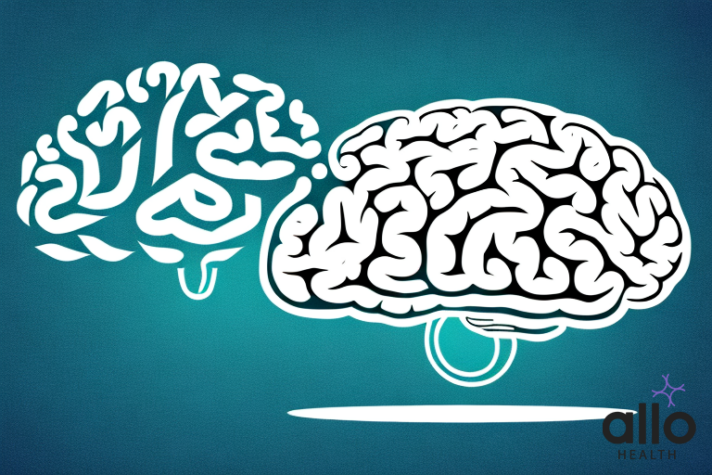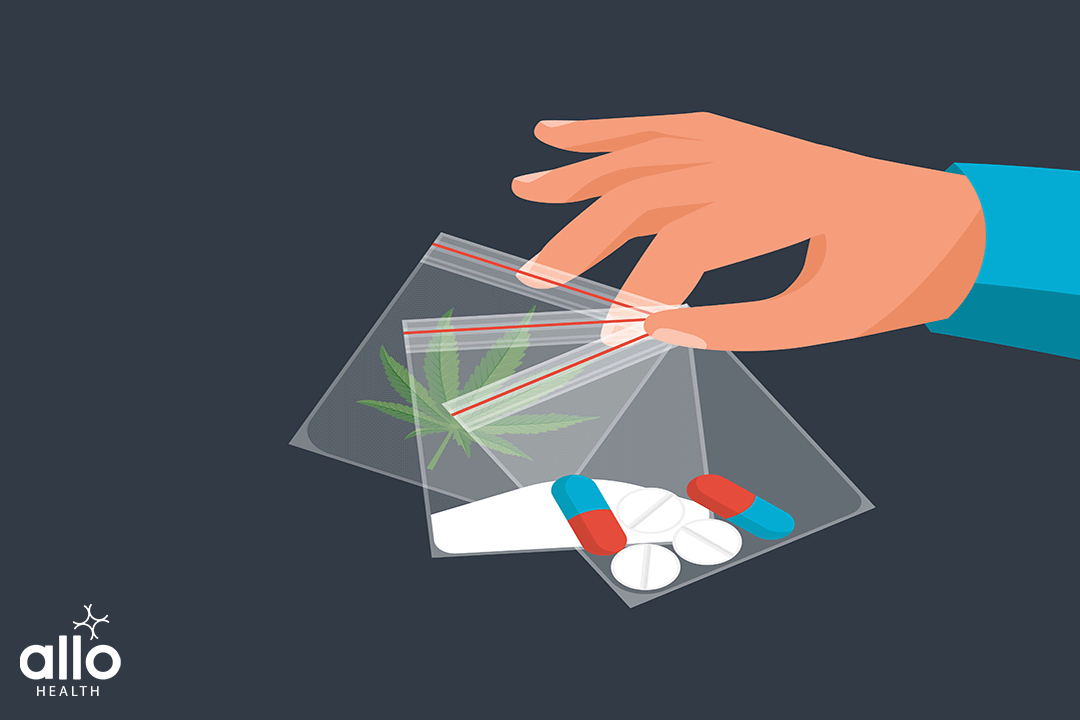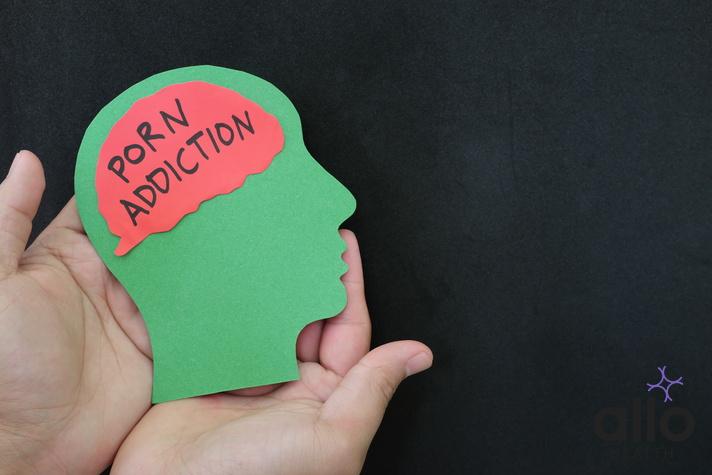The Link Between Cocaine and Porn Addiction

Allo Health is dedicated to personalized well-being, offering support and trusted information tailored to individual health goals. The platform emphasizes human-generated content, led by a distinguished medical team of experts, including physicians and sexual health specialists. Their commitment to credibility involves rigorous fact-checking, authoritative research, and continuous updates to ensure accurate, up-to-date information. Allo Health's unique approach goes beyond conventional platforms, providing expert-led insights and a continuous commitment to excellence, with user feedback playing a crucial role in shaping the platform's authoritative voice.

Dr. Aditi completed her undergraduate medical education at AJIMS, Mangalore, after which she worked in multi-speciality hospitals with COVID patients and in the Pain and Palliative medicine department. Driven by her experiences, she developed a keen interest in psychiatry. Dr. Aditi believes that mental health is just as, if not more important, than physical health.
Why This Was Upated?
Our experts continually monitor the health and wellness space, and we update our articles when new information became available.
Updated on 09 February, 2024
- Article was updated as part of our commitment to diversity, equity, and inclusion.

"The following blog article provides general information and insights on various topics. However, it is important to note that the information presented is not intended as professional advice in any specific field or area. The content of this blog is for general educational and informational purposes only.
Book consultation
The content should not be interpreted as endorsement, recommendation, or guarantee of any product, service, or information mentioned. Readers are solely responsible for the decisions and actions they take based on the information provided in this blog. It is essential to exercise individual judgment, critical thinking, and personal responsibility when applying or implementing any information or suggestions discussed in the blog."
Cocaine addiction and pornography addiction are often linked, and it is essential to examine the relationship between the two. Understanding the neurological and psychological effects that cocaine and pornography have on the brain can help us understand why they are so addictive. One of the primary components of addiction is the release of dopamine in the brain. When a person consumes cocaine or engages in pornographic behavior, there is a surge of dopamine, which activates the pleasure center of the brain. This experience is pleasurable, and over time, the brain associates the addictive behavior with pleasure. As a result, the person feels compelled to repeat the behavior, leading to addiction.
What Is Cocaine?
Cocaine is a powerful central nervous system stimulant drug that is derived from the leaves of the coca plant, native to South America. It is classified as a Schedule II controlled substance in the United States due to its high potential for abuse and the risk of severe psychological or physical dependence.
Here are some key details about cocaine:
- Chemical Structure:
- Cocaine’s chemical name is benzoylmethylecgonine.
- It belongs to a class of drugs known as stimulants.
- Origin:
- Cocaine is extracted from the leaves of the coca plant, primarily found in countries like Peru, Bolivia, and Colombia.
- Forms:
- Cocaine is available in various forms, including a white crystalline powder, a water-soluble powder (cocaine hydrochloride), and a solid, crystalline form (known as crack cocaine).
- Administration:
- Cocaine can be administered in multiple ways, such as snorting, smoking, or injecting. The method of administration affects the speed and intensity of the drug’s effects.
- Mechanism of Action:
- Cocaine acts as a stimulant by blocking the reuptake of neurotransmitters, such as dopamine, norepinephrine, and serotonin, in the brain. This leads to an accumulation of these neurotransmitters, resulting in an intense euphoric effect.
- Short-Term Effects:
- Cocaine use produces a rapid onset of intense pleasure and increased energy.
- Users may experience heightened alertness, talkativeness, and a decreased appetite.
- Short-term physical effects can include increased heart rate, elevated blood pressure, and dilated pupils.
- Long-Term Effects:
- Chronic use of cocaine can lead to addiction, as the drug affects the brain’s reward system.
- Long-term use can have detrimental effects on physical and mental health, including cardiovascular concerns, respiratory concerns, anxiety, paranoia, and cognitive impairments.
- Health Risks:
- Cocaine abuse is associated with numerous health risks, including the risk of heart attack, stroke, respiratory failure, and other life-threatening conditions.
- Sharing needles for cocaine injection increases the risk of infectious diseases like HIV and hepatitis.
- Addiction and Withdrawal:
- Cocaine addiction is characterized by a compulsive and uncontrollable craving for the drug.
- Withdrawal symptoms can include fatigue, depression, increased appetite, and intense cravings, making it challenging for individuals to quit using the drug.
- Treatment:
- Treatment for cocaine addiction often involves behavioral therapies, counseling, and support groups.
- There are no FDA-approved medications specifically for treating cocaine addiction, but research is ongoing in this area.
It’s important to note that cocaine use is illegal in many countries due to its potential for harm and abuse. The information provided here is for educational purposes, and if you or someone you know is struggling with substance abuse, seeking professional help is strongly recommended.
Cocaine Uses & Benefits
Cocaine is a powerful central nervous system stimulant, and its medical uses are limited. While it was historically used in the medical field for certain purposes, its high potential for abuse and the development of safer alternatives have led to strict regulations and restrictions. As of my last knowledge update in January 2022, cocaine is not widely used for medical purposes in most countries.
Historically, cocaine has been used for various medical applications, but due to its addictive nature and adverse effects, its medical use has been largely discontinued. Some historical uses of cocaine in medicine include:

- Local Anesthetic: Cocaine was one of the first local anesthetics used in medical practice. It was applied topically to mucous membranes, such as in eye surgeries or dental procedures, to numb the area. However, its use for this purpose has been largely replaced by safer alternatives, such as lidocaine.
- Vasoconstrictor: Cocaine has vasoconstrictive properties, meaning it can narrow blood vessels. This made it useful in certain medical procedures, like nasal surgery, where it could help reduce bleeding. However, due to its potential for cardiovascular side effects, alternative medications with fewer risks are now preferred.
Despite its historical medical uses, the potential for abuse, addiction, and serious health risks associated with cocaine use has led to stringent regulations, and it is no longer commonly prescribed or used in medical practice. Safer and more effective alternatives have been developed for the purposes for which cocaine was once employed.
It’s crucial to note that any non-medical use of cocaine is illegal and poses significant health risks. Cocaine abuse can lead to severe physical and psychological consequences, including addiction, cardiovascular concerns, respiratory concerns, and an increased risk of overdose. If you have concerns about substance use or addiction, it is essential to seek professional medical advice and support.
Cocaine Side Effects And Precautions
Cocaine use is associated with a range of side effects and precautions due to its potent stimulant properties and potential for abuse. It’s important to note that using cocaine can have serious health consequences, both in the short term and with prolonged use. Here are detailed side effects and precautions associated with cocaine:
Short-Term Side Effects:
- Euphoria and Increased Energy: Cocaine use often results in a rapid onset of intense euphoria, increased energy, and a feeling of confidence.
- Increased Heart Rate and Blood Pressure: Cocaine is a powerful stimulant that can lead to a significant increase in heart rate and blood pressure, increasing the risk of cardiovascular concerns.
- Dilated Pupils: Cocaine use can cause dilated pupils, which is a common physical sign of its stimulant effects.
- Talkativeness and Alertness: Users may experience heightened talkativeness, alertness, and a reduced need for sleep.
- Decreased Appetite: Cocaine can suppress appetite, leading to reduced food intake.
- Insomnia:
- Difficulty falling asleep or staying asleep is a common short-term effect of cocaine use.
- Paranoia and Anxiety: Cocaine can induce feelings of paranoia, anxiety, and restlessness, particularly with higher doses.
- Nausea and Vomiting: Some users may experience nausea and vomiting, especially during the initial stages of intoxication.
- Tactile Hallucinations: Cocaine use may cause tactile hallucinations, where users feel sensations that are not present.
Long-Term Side Effects and Health Risks:
- Addiction: Chronic use of cocaine can lead to psychological and physical dependence, making it difficult for individuals to quit.
- Cardiovascular concerns: Long-term cocaine use is associated with an increased risk of heart attack, arrhythmias, and other cardiovascular concerns.
- Respiratory concerns: Smoking crack cocaine can lead to respiratory concerns, including coughing, shortness of breath, and lung damage.
- Cognitive Impairment: Prolonged cocaine use may result in cognitive impairments, affecting memory, attention, and decision-making.
- Mood Disorders: Cocaine abuse is linked to mood disorders such as depression, irritability, and anxiety.
- Malnutrition: Cocaine’s appetite-suppressing effects can contribute to malnutrition and weight loss.
Precautions:
- Risk of Overdose: Cocaine use carries a significant risk of overdose, which can be fatal. Overdose symptoms include seizures, hallucinations, extreme agitation, and cardiac arrest.
- Cardiovascular Precautions: Individuals with pre-existing cardiovascular conditions should avoid cocaine due to the increased risk of heart-related complications.
- Pregnancy and Breastfeeding: Cocaine use during pregnancy can harm the developing fetus and lead to complications. It can also be transmitted through breast milk, posing risks to the infant.
- Mental Health Considerations: Individuals with a history of mental health disorders, such as anxiety or depression, may experience exacerbated symptoms with cocaine use.
- Avoid Mixing with Other Substances: Combining cocaine with other substances, including alcohol, increases the risk of adverse reactions and health complications.
- Addiction Treatment: Individuals struggling with cocaine addiction should seek professional help for appropriate treatment and support.
It’s crucial to recognize that cocaine use is associated with serious health risks, and seeking professional help for substance abuse is highly recommended. If you or someone you know is experiencing concerns related to cocaine use, contacting a healthcare professional or addiction treatment center is important for proper evaluation and intervention.

The Link Between Cocaine and Porn Addiction
It’s important to note that while there is some research on the effects of substance abuse and behavioral addictions, the link between cocaine use and porn addiction is not well-established, and the topic is complex. Both issues involve distinct mechanisms in the brain and are influenced by various factors.
- Neurological aspects:
- Cocaine primarily affects the brain’s reward system by increasing the levels of dopamine, a neurotransmitter associated with pleasure and reinforcement.
- Porn addiction, on the other hand, involves behavioral reinforcement, with sexual stimuli triggering the release of dopamine.
- While both substances and sexual stimuli can activate the reward system, the specific neurological pathways and mechanisms may differ.
- Reward system activation:
- Cocaine use leads to intense and immediate pleasure due to the rapid release of dopamine, reinforcing the desire to use the drug.
- Porn addiction can also trigger dopamine release through sexual arousal, creating a reward loop that encourages continued consumption of pornographic material.
- Psychological factors:
- Addiction, whether to substances like cocaine or behaviors like consuming pornography, often involves psychological components such as cravings, compulsive behavior, and loss of control.
- Individuals may turn to substances or behaviors as a coping mechanism for stress, anxiety, or other emotional challenges.
- Overlap in vulnerability factors:
- Some individuals may be more vulnerable to addictive behaviors in general due to genetic, environmental, or psychological factors.
- It’s possible that individuals prone to addictive behaviors might be more likely to develop issues with both cocaine and porn consumption.
- Co-occurring disorders:
- Substance use disorders and behavioral addictions can co-occur with other mental health issues, creating a complex interplay of factors.
- Individuals with a history of trauma, depression, or anxiety may be more susceptible to both cocaine use and porn addiction.
- Limited research:
- It’s important to note that there is limited empirical research specifically examining the link between cocaine use and porn addiction.
- Most studies tend to focus on substance use disorders or behavioral addictions individually rather than exploring potential connections between them.
In summary, while there are commonalities in terms of the brain’s reward system involvement, the specific link between cocaine use and porn addiction is not well-defined in the current scientific literature. Further research is needed to understand the nuanced interactions between substance use and behavioral addictions and the factors that contribute to their co-occurrence, if any.
Most Asked Questions
-
Is there an instantaneous hyperlink among cocaine use and the consumption of pornography?
There is no direct hyperlink between cocaine use and the intake of pornography. Cocaine is a powerful stimulant that commonly impacts neurotransmitters in the mind, whilst pornography intake is motivated by using numerous social, psychological, and man or woman factors. However, substance use can effect conduct, so warning and focus are essential.
-
Can cocaine use contribute to sexual dysfunction or have an effect on relationships?
Yes, chronic cocaine use can result in sexual disorder, which include difficulties with arousal and overall performance. Additionally, the effect on relationships can be extensive, as cocaine use can make contributions to mood swings, paranoia, and strained interpersonal dynamics.
-
Does cocaine use exacerbate current intellectual fitness troubles associated with pornography dependancy?
Cocaine use can exacerbate existing mental fitness concerns, probably influencing addictive behaviors. Individuals with pre-current conditions like pornography addiction or other impulse control disorders may also enjoy intensified signs and symptoms, requiring complete expert intervention.
-
Can the mixture of cocaine and pornography boom the hazard of unstable sexual behaviors?
Yes, the combination of cocaine and pornography may boom the hazard of engaging in unstable sexual behaviors. Cocaine's impact on judgment and inhibition, mixed with the heightened arousal from pornography, can lead to impulsive and risky sexual choices.
-
Is looking for expert help important for people coping with each cocaine use and pornography dependancy?
Absolutely. Professional assistance is critical for people going through each cocaine use and pornography addiction. Dual diagnoses require specialised remedy to address the complicated interaction of substance abuse and behavioral concerns, ensuring a comprehensive and powerful healing plan.






































